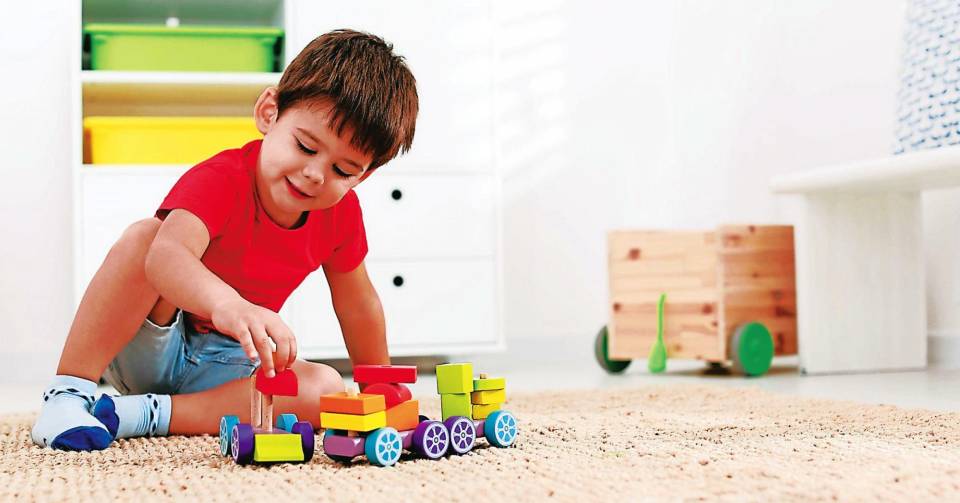How Does Play Help a Child’s Development?
In the seemingly simple act of play—be it constructing intricate block towers, engaging in pretend conversations with toys, or the simple joy of bubble chasing—lies a profound tool for growth and learning in children.
TL;DR:
Play is a vital force in childhood development, fostering cognitive growth, physical milestones, emotional exploration, and social skills. Through activities ranging from imaginative role-play to physical games, children build creativity, problem-solving, motor coordination, empathy, and resilience. Different types of play—solitary, cooperative, or digital—serve unique developmental purposes, with balance and variety being key. Adults play a supportive role by providing safe, enriched environments that encourage self-directed exploration. Ultimately, nurturing a play-rich environment helps unlock a child’s potential and lays the foundation for lifelong learning and well-being.
Act now for early intervention evaluation in NYC!

Cognitive Growth Through Play: A Core Pillar of Development
Indeed, play is a pivotal exercise for the mind, nurturing a child’s cognitive development in profound ways. It bolsters critical thinking, spatial awareness, creativity, and linguistic prowess as children engage in various forms of play. These playful acts are not merely passing activities but vital exercises setting the stage for lifelong learning and academic achievement.
Physical Milestones Achieved in the Spirit of Fun
Beyond the brain’s realms, play is integral to children’s physical development. Activities ranging from early mobility play like crawling to more structured games involving coordination, such as soccer or hopscotch, cultivate essential motor skills. Fine motor skills, too, are honed through engaging tasks like crafting, puzzle solving, and drawing, promoting hand-eye coordination and precision.
Navigating Emotions Through the World of Play
Play provides a unique venue for emotional exploration and expression. Children, through pretend scenarios and role-playing, can simulate real-world experiences, enabling them to process and articulate their feelings and fears in a supportive environment. This emotive journey through play aids in developing empathy, resilience, and a deeper understanding of self and others.
Fostering Social Connections and Skills
The act of play also serves as a crucial platform for social development. Through interactive play, children learn vital interpersonal skills such as sharing, turn-taking, negotiating, and conflict resolution. These learned behaviors and skills are fundamental to forming healthy relationships and navigating social landscapes effectively throughout life.
Diverse Forms of Play: Catering to Developmental Needs
Play manifests in various types, each serving distinct developmental purposes. From solitary play that encourages self-reliance and creativity to cooperative play that demands teamwork and communication, understanding these variations allows caregivers to tailor activities that best support a child’s growth phase.
Adults’ Supporting Role: Facilitating Meaningful Play
While adult intervention should be minimal, their role in setting the stage for effective play is crucial. Providing a safe, enriched environment where children feel free to lead their play adventures is key. This may involve offering versatile toys, mirroring activities, or simply being an encouraging presence, thereby nurturing a fertile ground for exploration and discovery.
Balancing Digital Interactions: Embracing Modern Play Avenues
In today’s digital era, finding a harmonious balance between traditional play and technology is essential. While digital platforms can offer educational value and connectivity, they should complement, not replace, the irreplaceable benefits of tactile, imaginative play.
Empowering Parents: Cultivating a Playful Environment at Home
Fostering a play-rich environment need not be complex or costly. Everyday items can become the centerpiece of imaginative adventures. Prioritizing ample time for unstructured play, engaging in your child’s creative worlds, and emphasizing the joy of playing together are foundational steps in supporting developmental growth.
In essence, play is a dynamic force in childhood development, shaping cognitive abilities, physical skills, emotional intelligence, and social competencies. By recognizing play’s pivotal role and actively nurturing these experiences, caregivers can unlock children’s potential, guiding them toward a vibrant path of growth and discovery.
Key Takeaways
- Play is essential for cognitive development, strengthening critical thinking, creativity, spatial awareness, and language skills.
- Physical development is supported through play, enhancing motor coordination, fine motor skills, and overall mobility.
- Emotional growth is nurtured by play, helping children process feelings, develop empathy, build resilience, and understand themselves and others.
- Social skills such as sharing, cooperation, negotiation, and conflict resolution are learned through interactive play.
- Different types of play (solitary, cooperative, imaginative, digital) serve unique developmental purposes and should be balanced appropriately.
- Adults play a vital supportive role by creating safe, enriched environments that encourage independent and creative play.
- Technology can complement but should not replace traditional play, as tactile and imaginative activities remain irreplaceable for development.
- Parents can foster a playful environment at home with simple resources, unstructured time, and active engagement to support holistic growth.
- Overall, play is a powerful tool that shapes children’s cognitive, physical, emotional, and social development, laying the foundation for lifelong learning and well-being.
